| Pages:
1
2 |
BajaVida
Senior Nomad
  
Posts: 541
Registered: 9-1-2003
Location: Motown, Califas
Member Is Offline
Mood: muy cool
|
|
Cardon forest south of San Felipe
I have a vague memory of a post (by David K) years ago describing a side trip to a great cardon forest. Did I make that up?
No se apure y dure.
Don\'t hurry and you\'ll last longer.
|
|
|
Ken Cooke
Elite Nomad
     
Posts: 8955
Registered: 2-9-2004
Location: Riverside, CA
Member Is Offline
Mood: Pole Line Road postponed due to injury
|
|
The cardon are massive south of San Felipe (near Punta Estrella Campo). This is on private land - it has a self-guided tour where you can view the
different sections of the grounds with plenty o Cardon Cactii.
|
|
|
willardguy
Elite Nomad
     
Posts: 6451
Registered: 9-19-2009
Member Is Offline
|
|
| Quote: | Originally posted by Ken Cooke
The cardon are massive south of San Felipe (near Punta Estrella Campo). This is on private land - it has a self-guided tour where you can view the
different sections of the grounds with plenty o Cardon Cactii. |
is this by the giant saguaro's?
|
|
|
Ken Cooke
Elite Nomad
     
Posts: 8955
Registered: 2-9-2004
Location: Riverside, CA
Member Is Offline
Mood: Pole Line Road postponed due to injury
|
|
Photos from August 2001


|
|
|
Ken Cooke
Elite Nomad
     
Posts: 8955
Registered: 2-9-2004
Location: Riverside, CA
Member Is Offline
Mood: Pole Line Road postponed due to injury
|
|
| Quote: | Originally posted by willardguy
| Quote: | Originally posted by Ken Cooke
The cardon are massive south of San Felipe (near Punta Estrella Campo). This is on private land - it has a self-guided tour where you can view the
different sections of the grounds with plenty o Cardon Cactii. |
is this by the giant saguaro's? |
They are indeed giant in stature.
http://en.wikipedia.org/wiki/Pachycereus_pringlei
http://www.cactiguide.com/cactus/?genus=Pachycereus&spec...
[Edited on 1-4-2014 by Ken Cooke]
|
|
|
David K
Honored Nomad
        
Posts: 65100
Registered: 8-30-2002
Location: San Diego County
Member Is Offline
Mood: Have Baja Fever
|
|
Hi BajaVida... they are near Punta Estrella Beach turnoff, by that small mountain south of San Felipe that Hwy. 5 goes around.
As Willard says, the sign for them says 'Sahuaros', they are actually Cardon Cacti, the world's largest species. Here is a web post with photos for
VALLE DE LOS GIGANTES (Km. 14): http://www.virtualtourist.com/travel/North_America/Mexico/Es...
|
|
|
David K
Honored Nomad
        
Posts: 65100
Registered: 8-30-2002
Location: San Diego County
Member Is Offline
Mood: Have Baja Fever
|
|
That's a nice cactus link Ken. The main difference I see between the Baja Cardon and the Arizona/Sonora Sahuaro is the cardon usually will form
multiple trunks or branches from the base and the sahuaro just a few and midway up. The cardon can also grow much larger.
BajaVida, that attraction 'Valle de los Gigantes' popped up after the new graded road was paved. Previous to that road being built, I used to drive to
Shell Island from the San Felipe airport (was there since 1974) on the old road to Punta Diggs (near Pta. Estrella) and Percebu, passing through the
cardonal (cardon forest) without thinking much about them being special (I had seen more and bigger ones further south).
The largest cardon cacti are south of Bahia de los Angeles in the Valle la Bocana. The photo on the older Baja Plant Field Guide was taken there.
|
|
|
treuboff
Nomad
 
Posts: 127
Registered: 8-27-2013
Location: prescott az
Member Is Offline
|
|
Last time $10 us per carload and soft sand. Nothing of interest but the Cacti itself. Lots of stuff to do down the highway at Percebu aka Shell
island.
|
|
|
David K
Honored Nomad
        
Posts: 65100
Registered: 8-30-2002
Location: San Diego County
Member Is Offline
Mood: Have Baja Fever
|
|
| Quote: | Originally posted by treuboff
Last time $10 us per carload and soft sand. Nothing of interest but the Cacti itself. Lots of stuff to do down the highway at Percebu aka Shell
island. |
Every low tide reveals new treasures!
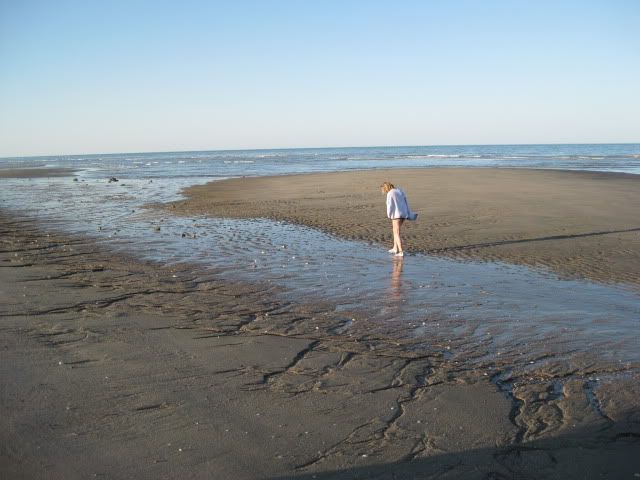
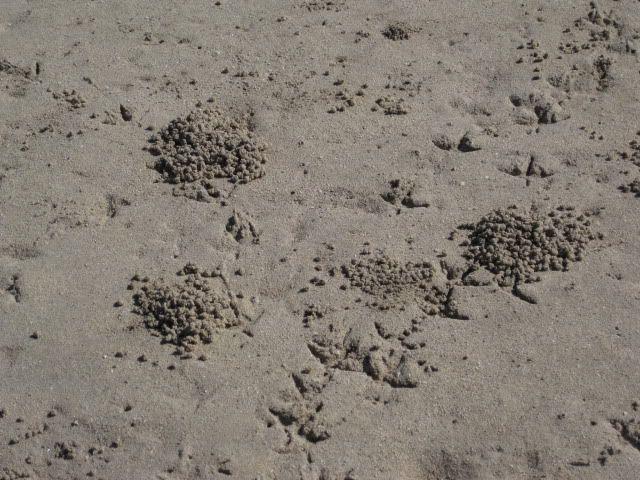
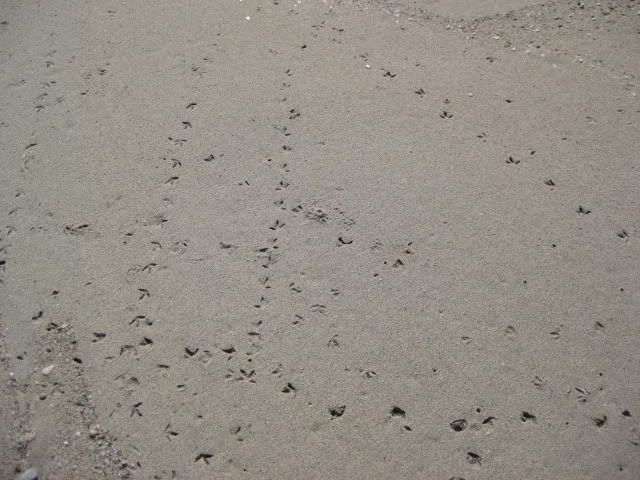
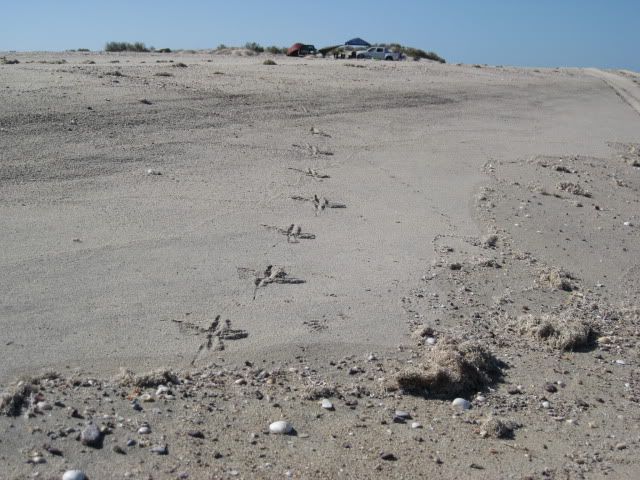
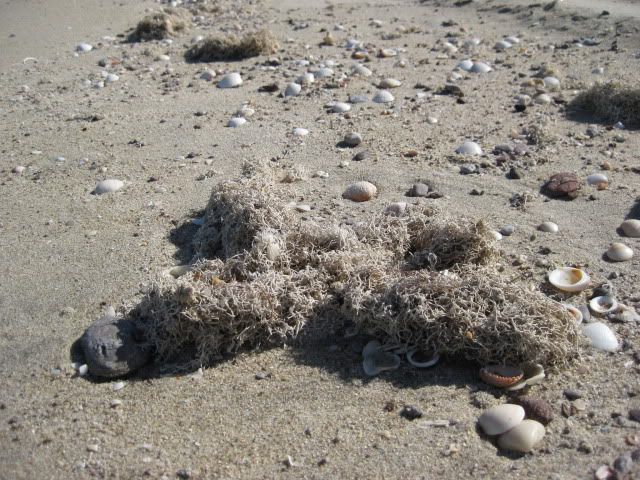
Sometimes just nothing at all is enjoyable to see...

Or hang out with others at Percebu, across the lagoon from Shell Island...
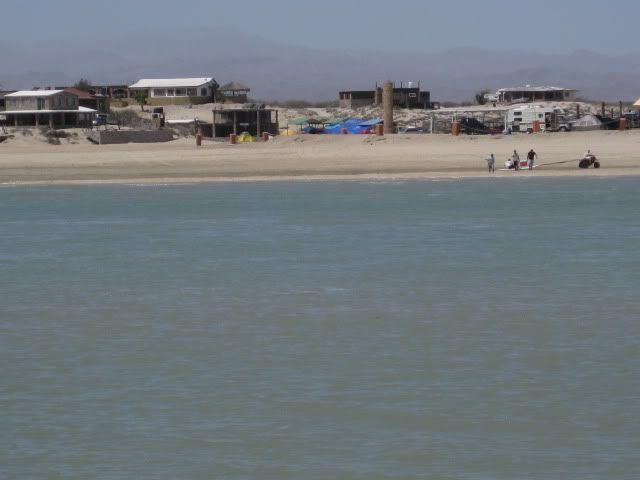
|
|
|
CortezBlue
Super Nomad
   
Posts: 2213
Registered: 11-14-2006
Location: Fenix/San Phelipe
Member Is Offline
|
|
In Fenix they are Saguaro's, and they are really nothing like the Cardon cactus in San Felipe.
Saguaro's in AZ are much fuller and look far less dry. Maybe as if they have absorbed more water than it's cousin. The Saguaro's also seem to be more
green in color, probably due to a larger amount of annual rain in the Maricopa County area.
“Two things are infinite: the universe and human stupidity; and I'm not sure about the universe.”
- Albert Einstein
Follow Cortez Blue
www.cortezblue.com
We put the FUNK in disFUNKtion |
|
|
PaulW
Ultra Nomad
    
Posts: 3101
Registered: 5-21-2013
Member Is Offline
|
|
| Quote: | | Quote: | | Quote: | = = =
The cardon's are found in Baja and the deserts of South America. The saguaro's are found in Arizona and mainland Mexico. The largest cardon's are
twice and large and twice as tall compared to saguaro.
No Saguaro's in Baja and no cardon's north of the border.
The valley of the Giants turn off highway 5 south of San Felipe is at KM 14.
PW
= = =
| Quote: | Originally posted by David K
The cardon are massive south of San Felipe (near Punta Estrella Campo). This is on private land - it has a self-guided tour where you can view the
different sections of the grounds with plenty o Cardon Cactii. |
is this by the giant saguaro's? |
They are indeed giant in stature.
http://en.wikipedia.org/wiki/Pachycereus_pringlei
http://www.cactiguide.com/cactus/?genus=Pachycereus&spec...
[Edited on 1-4-2014 by Ken Cooke] |
That's a nice cactus link Ken. The main difference I see between the Baja Cardon and the Arizona/Sonora Sahuaro is the cardon usually will form
multiple trunks or branches from the base and the sahuaro just a few and midway up. The cardon can also grow much larger.
BajaVida, that attraction 'Valle de los Gigantes' popped up after the new graded road was paved. Previous to that road being built, I used to drive to
Shell Island from the San Felipe airport (was there since 1974) on the old road to Punta Diggs (near Pta. Estrella) and Percebu, passing through the
cardonal (cardon forest) without thinking much about them being special (I had seen more and bigger ones further south).
The largest cardon cacti are south of Bahia de los Angeles in the Valle la Bocana. The photo on the older Baja Plant Field Guide was taken there.
|
|
|
|
grace59
Senior Nomad
  
Posts: 614
Registered: 9-14-2004
Location: San Felipe, Baja, Mexico
Member Is Offline
|
|
| Quote: | Originally posted by treuboff
Last time $10 us per carload and soft sand. Nothing of interest but the Cacti itself. Lots of stuff to do down the highway at Percebu aka Shell
island. |
Still worth seeing....Park and take a walk there. The cacti are amazing and the scenery is beautiful. It is a nice little side trip. I like it
there.
Whenever I hear that rainy, chill wind blow. I think it may be time to head for Mexico. Tengo que obedecer mi corazon!
|
|
|
durrelllrobert
Elite Nomad
     
Posts: 7393
Registered: 11-22-2007
Location: Punta Banda BC
Member Is Offline
Mood: thriving in Baja
|
|
Yep, they be real big!
| Quote: | Originally posted by David K
Hi BajaVida... they are near Punta Estrella Beach turnoff, by that small mountain south of San Felipe that Hwy. 5 goes around.
As Willard says, the sign for them says 'Sahuaros', they are actually Cardon Cacti, the world's largest species. Here is a web post with photos for
VALLE DE LOS GIGANTES (Km. 14): http://www.virtualtourist.com/travel/North_America/Mexico/Es... |
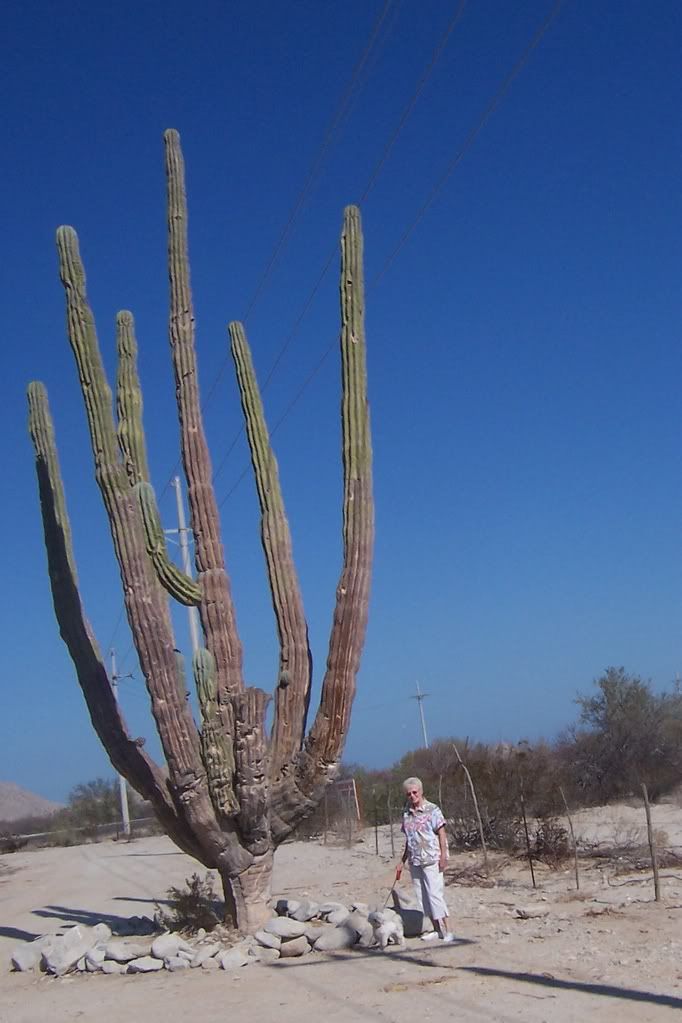
Bob Durrell
|
|
|
Ken Bondy
Ultra Nomad
    
Posts: 3326
Registered: 12-13-2002
Member Is Offline
Mood: Mellow
|
|
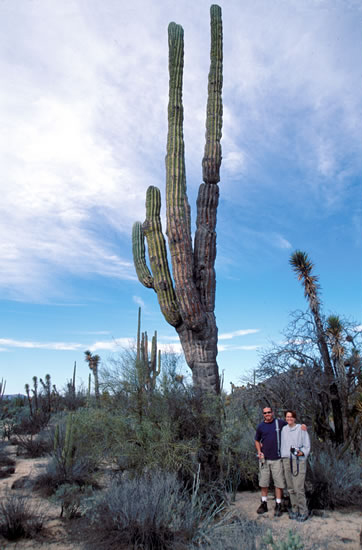
carpe diem!
|
|
|
BajaBlanca
Select Nomad
      
Posts: 13212
Registered: 10-28-2008
Location: La Bocana, BCS
Member Is Offline
|
|
wow, the picture above is a HUGE plant!
|
|
|
Ken Bondy
Ultra Nomad
    
Posts: 3326
Registered: 12-13-2002
Member Is Offline
Mood: Mellow
|
|
| Quote: | Originally posted by BajaBlanca
wow, the picture above is a HUGE plant! |
Pretty sure that is between Bahia de Los Angeles and San Francisquito.
carpe diem!
|
|
|
durrelllrobert
Elite Nomad
     
Posts: 7393
Registered: 11-22-2007
Location: Punta Banda BC
Member Is Offline
Mood: thriving in Baja
|
|
| Quote: | Originally posted by Ken Bondy
| Quote: | Originally posted by BajaBlanca
wow, the picture above is a HUGE plant! |
Pretty sure that is between Bahia de Los Angeles and San Francisquito. |
..mine was actually taken right next
to the highway at VALLE DE LOS GIGANTES
Bob Durrell
|
|
|
El Comadante Loco
Nomad
 
Posts: 274
Registered: 6-12-2004
Member Is Offline
|
|
I have noted over the past several years that the Cardon have some type of infection that rots and eventually kills it.
Anyone have any idea what this is and what if anything is being done to preserve the Cardons.
What a loss of a Baja treasure if this infection is not brought under control.
|
|
|
durrelllrobert
Elite Nomad
     
Posts: 7393
Registered: 11-22-2007
Location: Punta Banda BC
Member Is Offline
Mood: thriving in Baja
|
|
| Quote: | Originally posted by El Comadante Loco
I have noted over the past several years that the Cardon have some type of infection that rots and eventually kills it.
Anyone have any idea what this is and what if anything is being done to preserve the Cardons.
What a loss of a Baja treasure if this infection is not brought under control. |
February 2012, Volume 96, Number 2
Page 292
http://dx.doi.org/10.1094/PDIS-08-11-0698
Disease Notes
First Report of a Bionectria sp. Associated with a Stem Rot of Cardon Cactus (Pachycereus pringlei) in Baja California Sur, Mexico
R. J. Holguín-Peña, L. G. Hernández-Montiel, and H. Latisnere, Laboratorio de Fitopatología, Centro de Investigaciones Biológicas del Noroeste, La
Paz, B.C.S. 23096, Mexico; and E. O. Rueda-Puente, Universidad de Sonora, Santa Ana, Sonora 84600, Mexico
Giant cardon (Pachycereus pringlei ((S.Watson) Britton & Rose) is the most common cactus in northwestern Mexico and is endemic to the Baja
California Peninsula and Sonora Desert. A large part of the peninsula (El Vizcaino Biosphere Reserve and Gulf of California) now consists of protected
areas and is classified as a World Heritage site by UNESCO (http://whc.unesco.org/en/list/1182).
Cardon cactus is an important ecological resource for indigenous people and is used as feed for range cattle. Since 2000, in the central and southern
part of the State of Baja California Sur, an apical stem rot has spread to ~17% of the natural cardon population around San Pedro (23°29′N,
110°12′W), La Paz (24°08′N, 110°18′W), and El Comitán (24°05′N, 110°21′W).
Affected cacti display necrosis of apical branches, dry rot, cracks in the stem and branches, bronzing of mature spines surrounding the affected area,
and reddish brown gummy exudate. Thirty samples from the edges of symptomatic lesions were surface disinfected for 2 min in 0.8% (wt/vol) NaOCl and
ethanol (70%), rinsed in sterile, distilled water, and grown on potato dextrose agar at 27°C.
A cottony, brownish fungus was consistently isolated from affected tissues. Koch's postulates were performed in pots of 10 cm in diameter with
5-year-old cacti inoculated (9-day-old mycelia) and incubated (15 days) at room temperature (26°C). The rough, dry, brownish, circular lesions that
appeared were the same as those observed in the field.
Healthy cacti inoculated with potato dextrose agar plugs were symptomless. The fungus was always reisolated from infected cacti and morphological
examinations (2) were performed: one-septate, olive-green, smooth, ellipsoidal conidium and two-celled ascospores (15 to 20 × 5 to 7 μm) were
present. Also present were conidial masses from monomorphic, penicillate conidiophores in sporodochia.
Cottony and white-to-light yellow PDA colonies were observed. Genomic DNA was extracted from lyophilized hyphae using the method described by
O'Donnell (1) or with a DNeasy Plant Mini Kit (Qiagen, Hilden, Germany). The internal transcribed spacer (ITS) regions 1 and 2 of the 5.8, 18, and 28S
ribosomal RNA genes were amplified with the primer pairs ITS1 and ITS4 (3).
The expected amplicon of 571 bp was sequenced and compared with fungal sequences available from the GenBank-EMBL database using the BlastN and CLUSTAL
programs (MegAlign, DNASTAR, Madison, WI). The closest nucleotide similarity had 99% identity with a Bionectria sp. (GenBank Accession No.
HM849058.1).
To our knowledge, on the basis of morphological characteristics, DNA comparisons, and pathogenicity tests, this is the first report of a Bionectria
sp. causing an apical stem rot disease in cardon cacti in Mexico.
Since there are no control measures in Mexico there is a permanent risk that the disease will spread to healthy areas.
Bob Durrell
|
|
|
willardguy
Elite Nomad
     
Posts: 6451
Registered: 9-19-2009
Member Is Offline
|
|
I thought maybe I had dreamed this but finally found the story of shipping a giant cardon from san felipe to spain for the worlds fair! interesting
story if you're interested
http://www.blueroadrunner.com/giant.htm
|
|
|
| Pages:
1
2 |

